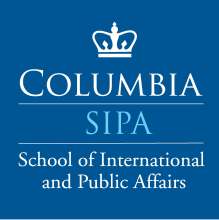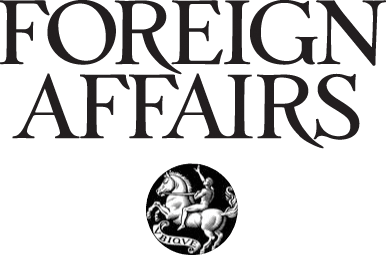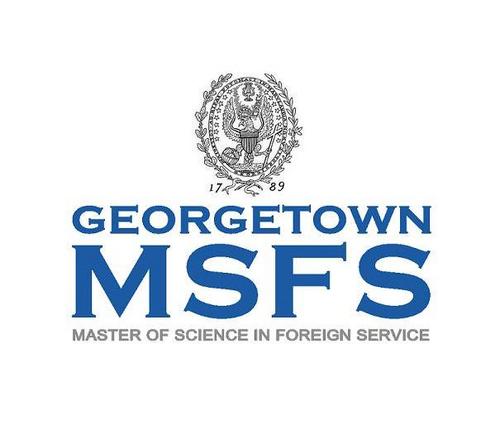By Sean Kim
Territorial disputes[1] are one of the leading causes of diplomatic tensions in East Asia. The Diaoyu/Senkaku Islands dispute, one of the tensions plaguing the region, involves two of the world’s biggest economies: China and Japan. At first glance, the uninhabited islands, composed of five small islands and three rocks, seem to hold no obvious value. However, the disputed islands continue to be a part of an ongoing diplomatic crisis in East Asia.[2] This paper is an exploratory paper identifying some of the concealed motives behind the Diaoyu/Senkaku Islands dispute after exploring each government’s official position, while questioning the validity of historical evidence presented by both China and Japan.
Short History of the Diaoyu/Senkaku Islands
The Diaoyu/Senkaku Islands are geographically located in between the Ryukyu Islands, the Taiwan Island, and the Asian continent in the East China Sea, and historically located at the crossroads of Chinese and Japanese interactions. From the mid-17th century, both the Shogunate and the Ming Dynasty exerted varying degrees of political influence over the East China Sea.[3] The modern territorial dispute, however, finds its roots from the 1970s and has been reignited repeatedly ever since.
The United States administration of the Japanese Ryukyu Islands and the Daito Islands began in 1945.[4] In determining the geographical scope of the American administration, the United States Civil Administration of the Ryukyu Islands (USCAR) included the Diaoyu/Senkaku Islands within its boundaries.[5] In 1969, during the American administration period, the United Nations Economic Commission for Asia and the Far East conducted an extensive geophysical survey of the continental shelf between Taiwan and Japan, which revealed that the region may “possibly compar[e] favourably with the Persian Gulf area” in terms of hydrocarbon reserves.[6] This finding prompted Japan and China to independently corroborate the findings.[7] By 1971, both China and Japan were claiming the Diaoyu/Senkaku Islands as their own.[8]
The very next year, the administrative power of the Ryukyu and the Daito Islands were transferred to Japan.[9]The Okinawa Reversion Agreement was met with strong Chinese protest as the reversion included the disputed area.[10] However, both Japan and China agreed to set the Diaoyu/Senkaku question aside in the Treaty of Peace and Friendship of 1978 in favor of normalizing their diplomatic relations.[11]
After the 1978 treaty, tension sparked again in 1992 as the Chinese government explicitly included the Diaoyu/Senkaku Islands as a part of “the territorial sea of the People’s Republic of China”, prompting Japanese objection.[12] More recently in 2010, a collision incident between a Japanese Coast Guard ship and a Chinese civilian fishing ship in the disputed waters and the subsequent Japanese arrest of the Chinese civilian resulted in an increase in anti-Japanese sentiment in China.[13] Diplomatically, China canceled scheduled ministerial meetings with Japan.[14]However, possibly the most controversial incident was the Japanese nationalization of the islands. In an effort to thwart the conservative Tokyo Governor’s plan to purchase and develop the islands, the Japanese national government made the purchase instead in order to leave the islands undeveloped.[15] Ironically, the decision that was intended to minimize diplomatic repercussions prompted the Chinese government to publish “Diaoyu Dao, an Inherent Territory of China”, a white paper delineating the Chinese official position on the territorial dispute.[16]
Relevant International Treaties and Declarations
Both Japanese and Chinese claims over the islands refer to the same four documents: the Treaty of Shimonoseki (1895), the Cairo Declaration (1943), the Potsdam Declaration (1945), and the San Francisco Peace Treaty (1951). Moreover, both Japan and China incorporate historical evidence to support their claims as well.[17] The main difference between the Japanese and the Chinese official positions comes from differing interpretations of whether the Diaoyu/Senkaku Islands are a part of the Island of Taiwan. While the Japanese government claims that the islands are not a part of Taiwan, the Chinese government claims otherwise.[18]
The Treaty of Shimonoseki was signed in 1895 between the Qing Empire and the Meiji Government and marked the end of the First Sino-Japanese War.[19] Article 2 b) reads, “the island of Formosa, together with all islands appertaining or belonging to the said island of Formosa” will be “cede[d] to Japan in perpetuity”.[20] The absence of explicit mention of the Diaoyu/Senkaku Islands and the vagueness of the term “islands appertaining or belonging to… Formosa” are the core sources of disagreement between Japan and China concerning this treaty.
The Japanese government claims that the formal Japanese administration of the islands began with a Japanese land survey in 1895, which found the islands to be terra nullius.[21] However, the Chinese government, while stating that the Treaty of Shimonoseki was an unequal treaty, considers the disputed islands to have been ceded to Japan at the end of the First Sino-Japanese War.[22] These narratives prepare for references to the Cairo and Potsdam Declarations.
In the Cairo Declaration of 1943, the Republic of China, the United States, and the United Kingdom jointly stated that one of their war aims was to ensure that Japan returned the land “stolen” from the Republic of China, including “Manchuria, Formosa, and the Pescadores”.[23] The Potsdam Declaration reverberated this war aim, stating that “Japanese sovereignty shall be limited to the islands of Honshu, Hokkaido, Kyushu, Shikoku and such minor islands as [the Republic of China, the United States, and the United Kingdom] determine.”[24] Just as the Treaty of Shimonoseki, the Cairo and Potsdam Declarations failed to geographically qualify the Formosa. The central question arises once again: are the Diaoyu/Senkaku Islands a part of Taiwan? For China, since the disputes islands are a part of the Taiwan Island, the islands were a part of the territory “stolen” by Japan and should have been returned to China.[25]Japan, however, claims that the islands came under Japanese sovereignty through the survey, therefore excluding the Diaoyu/Senkaku Islands from the list of islands surrendered after the Second World War.[26]
The crescendo of international treaties and declarations reaches its denouement with the San Francisco Peace Treaty of 1951. This treaty not only provides strong support for the Japanese claim over the Diaoyu/Senkaku Islands but also suggests that the international community in the 1950s might not have considered the disputed islands to be a part of the Taiwan Island. In listing all the Japanese territorial renunciation, Article 2 b) states that “Japan renounces all right, title and claim to Formosa….”[27] Article 3 follows this renunciation, which provides the United States as the “sole administering authority” of “Nansei Shoto south of 29° north latitude (including the Ryukyu Islands and the Daito Islands)….”[28] The article fails to offer any longitudinal qualification of the American administration, prompting the USCAR to issue Ordinance #27 in 1953, which included the Diaoyu/Senkaku Islands as administered territories of the USCAR.[29] The USCAR-administered territories were transferred to Japan through the Okinawa Reversion Agreement.[30] In sum, Japan renounced the Formosa through the Treaty of San Francisco. However, not only was the Japanese residual sovereignty of the Diaoyu/Senkaku Islands recognized by the United States, its full sovereignty was recognized in the Okinawa Reversion Agreement. Essentially, the United States, if not all 49 of the relevant parties of the Treaty of San Francisco, considered the disputed islands not as a part of Formosa but as a separate geographical entity.
The Chinese response to this treaty is rather simple. Noting that neither the Republic of China nor the People’s Republic of China was invited to join the conference, China does not recognize the results of the conference.[31] China highlights its dissent to the conference and its protests against the Okinawa reversion to provide evidence of continuity in claiming the disputed islands.[32]
Even though the Treaty of Shimonoseki, the Cairo and Potsdam Declarations, and the San Francisco Treaty all refer to Japanese sovereignty in the East China Sea to varying degrees, all four documents fail to either include the Diaoyu/Senkaku Islands explicitly or geographically qualify the Taiwan Island. This resulted in a diplomatic deterioration in Sino-Japanese relations. The exploration of official positions of both Japan and China offers an insight into the logic behind individual claims. However, this does not explain why Japan and China are heavily invested in these islands.
Economic Motivation
Both Japan and China have economic incentives to fight over the Diaoyu/Senkaku Islands. Soon after the aforementioned United Nations report, Japan and China conducted independent studies to confirm the findings. Chansoria notes that “the future of offshore oil development is conceivably the most important driver behind the territorial dispute over the Senkaku Islands”.[33] The two nations have a desperate need for a new and stable source of oil. The oil reserves in northern China are located far away from the economic and production centers in southern China.[34] With its energy consumption expected to rise, the Chinese government needs a stable and accessible source of oil for its economy.[35] The concern for energy shortage is not limited to China. Japan maintains a high net-import rate of hydrocarbon energy sources.[36] In order to grow the Japanese economy, Japan desperately needs a new reserve of energy.
Fishing rights around the disputed islands also prove to be a controversial issue. In 1997, Japan and China decided to look past their contested Exclusive Economic Zones in the East China Sea by opting for joint administration.[37] However, this mutual agreement does not include the Diaoyu/Senkaku Islands, leaving fishing rights in this region in flux.[38] Hence the trifecta: the Diaoyu/Senkaku Islands are the center of cultural, diplomatic, and economic competition between China and Japan.
Neither the Japanese official statement on the Ministry of Foreign Affairs website nor the Chinese white-paper mentions the economic incentive in controlling the disputed islands.[39] A Meiji fishing permit is the closest reference to the economic value of the islands.[40] China and Japan will most likely never admit to their own economic interests, as such statement will weaken the apparent validity of their claims. Of course, the economic motives are not the only strain of unsaid incentives for controlling the islands. The islands are strategically important as well.[41] The economic incentives serve only as mere examples of some of the hidden motives of the Diaoyu/Senkaku Islands dispute.
Historical Examples and Their Risks
Both China and Japan refer to their history in attempts to solidify their arguments. China claims that the disputed islands belong to China through the principle of discovery-occupation.[42] China notes that “ancient ancestors in China first discovered” the islands and that subsequent Chinese dynasties have maintained control and named the islands.[43] Moreover, naval defense maps from the Ming and the Qing Dynasties depict the Diaoyu/Senkaku Islands as a part of their territory.[44] These islands were used as the front lines of defense against the Wako pirates in the 15thand 16th centuries.[45] Japanese historical evidence is two-fold: residency and economic activities. Japan notes that more than 200 civilians inhabited the islands at one point.[46] Economic evidence includes the Meiji-era fishing rights and other civilian activities in the past such as “collecting bird feathers, manufacturing dried bonito, collecting coral, raising cattle…”.[47]
To strengthen the cases presented with the aforementioned international documents, both China and Japan use history to their favor. However, bringing a historical event, without considering the cultural or the political realities of the past, runs the risk of introducing presentism in the arguments. Japan and China offer the aforementioned evidence assuming that the control of the islands was mutually exclusive; if one party had control or influence over the Diaoyu/Senkaku Islands, the other party did not have effective control or influence over the islands. However, this line of logic fails when one considers East Asian diplomatic traditions.
Even in the late 19th century, the East Asian world order was in flux. While the remnants of the old Sinitic System order persisted, a world order based on western international law was challenging this old order.[48] One of the characteristics of the old world order that was still in effect was the concept of “dual dependency”. For instance, the Ryukyu Kingdom, while it was an independent political entity, paid regular tribute to the Ming and the Qing courts and received its yearly calendars in return.[49] However, the Shogunate, more specifically the Satsuma Domains, maintained heavy influence in the kingdom as well.[50] This non-mutually exclusive influence over the Ryukyu Kingdom persisted even into the Meiji era. As the Meiji Government incorporated the Ryukyu Islands as a part of Kagoshima Prefecture, the Meiji Government did so while acknowledging the Qing influence and claim over the islands.[51] Considering the difference between the present-day concept of national sovereignty and that of the past, the logical absurdity in using historical evidence from the past to claim exclusive control over disputed territories becomes apparent. Superimposing the present-day understanding of national sovereignty onto the past runs the risk of presentism. This examination highlights the temptation of incorporating presentism in a territorial dispute.
Conclusion
The Diaoyu/Senkaku Islands are only one of the disputed territories in East Asia. However, even this short examination of the dispute showcases that the explicit claims do not always reveal the full motives behind claiming parties and that the supporting evidence may not be valid. In the case of the Diaoyu/Senkaku Islands, the obvious economic motive behind the two countries is purposefully omitted. When economic interest is mentioned at all, it is to criticize the other party in hopes to render their argument ingenuine.[52] Moreover, at least some of the historical evidence presented in the arguments are employed without providing contemporary context. Not only are these presentist evidence invalid, but they also worsen pre-existing diplomatic tension. Of course, other hidden motives and historical evidence that this paper did not explore exist. However, this does not detract from the main theme of the paper: 1) merely comparing official government positions in a territorial dispute may not reveal the full intentions behind a dispute; and 2) accepting official positions may invite presentism in analyses. Fully understanding the history and the underlying sources of contentions is the first step in conflict resolution or de-escalation. Careful consideration of true reasons behind territorial disputes and critically thinking about the validity of historical evidence presented by claiming parties will offer insight into defusing diplomatic tension caused by territorial disputes in East Asia. Lessons highlighted in this short and perfunctory examination of the Diaoyu/Senkaku Islands dispute can - and should - be considered in understanding other territorial disputes in the region.
Footnotes
[1] The names of political or geographical entities used in this short paper do not imply any political bias. For the disputed islands in question, the alphabetically-presented term “Diaoyu/Senkaku Islands” is used, unless it is a direct quotation. The use of the term “Taiwan” or “the Taiwan Island” or “Taiwan” does not implicitly imply that there is a “Mainland” to accompany the island. Moreover, for simplicity, unless explicitly stated, “China” refers to the People’s Republic of China.
[2] Even though the United States and the Republic of China both have an interest and a claim respectively over these islands, these two political entities will not be discussed unless in direct relation to the People’s Republic of China and/or Japan.
[3] Murata, Tadayoshi. The Origins of Japanese-Chinese Territorial Dispute: Using Historical Records to Study the Diaoyu/Senkaku Islands Issue. World Scientific, 2016, p. 56.
[4] Chansoria, Monika. China, Japan, and Senkaku Islands: Conflict in the East China Sea amid an American Shadow. Routledge, 2018, p. 5.
[5] Ibid.
[6] Economic Commission for Asia and the Far East, editor. “The Sixth Session of the Committee for Co-Ordination of Joint Prospecting for Mineral Resources in Asian Offshore Areas.” Printed by the Geological Survey of Japan, Economic Commission for Asia and the Far East, Committee for Co-Ordination of Joint Prospecting for Mineral Resources in Asian Offshore Areas (CCOP), 1973, p. 5–6; Tseng, Huiyi Katherine. Lessons from the Disturbed Waters: the Diaoyu/Diaoyutai/Senkaku Islands Disputes. World Scientific, 2015, p. 10.
[7] Chansoria, p. 95.
[8] ""Diaoyu Dao, An Inherent Territory Of China" White Paper — Embassy Of The People's Republic Of China In The United States Of America". China-Embassy.Org, 2019, http://www.china-embassy.org/eng/zt/DiaoyuDaoofChina/t974694.htm. Accessed 15 Dec 2019;
"Senkaku Islands Q&A". Ministry Of Foreign Affairs Of Japan, 2019, https://www.mofa.go.jp/region/asia-paci/senkaku/qa_1010.html. Accessed 15 Dec 2019.
[9] “Senkaku Islands Q&A”.
[10] “”Diaoyu Dao, An Inherent Territory of China” White Paper”.
[11] Chansoria, p. 23.
[12] Ibid, p. 46 - 47.
[13] Tseng, p. 19.
[14] Ibid, p. 18 - 19.
[15] Perlez, Jane. "China Accuses Japan Of Stealing Disputed Islands". Nytimes.Com, 2017, https://www.nytimes.com/2012/09/12/world/asia/china-accuses-japan-of-stealing-disputed-islands.html. Accessed 15 Dec 2019.
[16] ““Diaoyu Dao, An Inherent Territory of China” White Paper”.
[17] ““Diaoyu Dao, An Inherent Territory of China” White Paper”; “Senkaku Islands Q&A”.
[18] Ibid.
[19] Martin, Alexander. “End of the Sinitic System: the Sino-Japanese War (to 1890s).” History 395. University of Pennsylvania, Philadelphia. 9 Oct. 2019.
[20] "Treaty Of Shimonoseki, 1895 | US-China Institute". China.Usc.Edu, 2019, https://china.usc.edu/treaty-shimonoseki-1895. Accessed 15 Dec 2019.
[21] “Senkaku Islands Q&A”.
[22] ““Diaoyu Dao, An Inherent Territory of China” White Paper”.
[23] "Cairo Communiqué | Birth Of The Constitution Of Japan". Ndl.Go.Jp, 2019, https://www.ndl.go.jp/constitution/e/shiryo/01/002_46/002_46tx.html. Accessed 15 Dec 2019.
[24] "Potsdam Declaration | Birth Of The Constitution Of Japan". Ndl.Go.Jp, 2019, https://www.ndl.go.jp/constitution/e/etc/c06.html. Accessed 15 Dec 2019.
[25] ““Diaoyu Dao, An Inherent Territory of China” White Paper”.
[26] “Senkaku Islands Q&A”.
[27] “Treaty of Peace with Japan”. Treaties.Un.Org, 2019, https://treaties.un.org/doc/publication/unts/volume%20136/volume-136-i-1832-english.pdf. Accessed 15 Dec 2019.
[28] Ibid.
[29] Chansoria, p. 5.
[30] “Senkaku Islands Q&A”.
[31] ““Diaoyu Dao, An Inherent Territory of China” White Paper”.
[32] Ibid.
[33] Chansoria, p. 94.
[34] Ibid, p. 96.
[35] Ibid.
[36] Ibid, p. 97.
[37] Ibid.
[38] Ibid.
[39] ““Diaoyu Dao, An Inherent Territory of China” White Paper”; “Senkaku Islands Q&A”.
[40] “Senkaku Islands Q&A”.
[41] Chansoria, p. 121.
[42] Ibid, p. 19.
[43] ““Diaoyu Dao, An Inherent Territory of China” White Paper”.
[44] Murata, p. 104.
[45] ““Diaoyu Dao, An Inherent Territory of China” White Paper”.
[46] "Senkaku Islands Information". Ministry Of Foreign Affairs Of Japan, 2019, https://www.mofa.go.jp/a_o/c_m1/senkaku/page1we_000009.html. Accessed 15 Dec 2019.
[47] “Senkaku Islands Q&A”.
[48] Chansoria, p. 17.
[49] Murata, p. 38.
[50] Ibid, p. 41.
[51] Ibid, p. 170.
[52] “Senkaku Islands Q&A”.

















